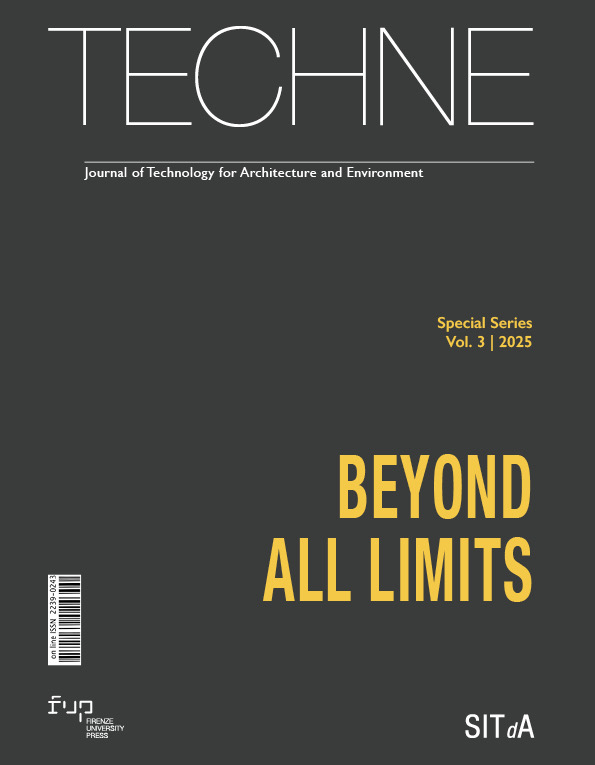A, Evaluation methods for waterfront public spaces: insights from different spatial scales in chinese and international cities
Published 2025-07-31
Keywords
- Waterfront public spaces,
- Evaluation methods,
- Scale,
- Design optimisation strategies
How to Cite
Copyright (c) 2025 Xiaowen Wu, Claudio Gambardella, Jiaqi Zhong

This work is licensed under a Creative Commons Attribution 4.0 International License.
Abstract
This research explores the evaluation methods for waterfront public spaces based on different project scales. It categorises the evaluation methods into three levels: large-scale, medium-scale, and small-scale, and proposes the most effective evaluation strategies for each. This study selected waterfront spaces in 38 Chinese cities and 17 international cities as case studies to analyse spatial evaluation methodologies and high-frequency keywords across varying spatial scales. Based on a systematic review of literature published in the past five years, the research employed term frequency analysis to investigate narrative patterns in academic discourse, supplemented by a data-driven analysis of 120 papers for keyword extraction and thematic categorisation. The results indicate that at the macro scale, design evaluation optimises the placement of planning points; at the medium-scale, feedback can be used to adjust spatial layouts and functions; and at the micro scale, dynamic updates of service facilities are possible. This study provides effective methods for more precise analysis of user needs and design optimization strategies.
Downloads
References
- Cheng, D. Y., Li, M. T., Ding, Y. Y. and Che, Y. (2018), “Urban waterfront space evaluation based on the social value of ecosystem services: A case study of the Huangpu River”, Shanghai Urban Planning Review, vol. 5, pp.125-130, available at: http://dx.doi.org/10.11982/j.supr.20180520 (accessed 19 May 2025).
- Jin, Y. and Mingrui, Z. (2024), “Research on the Optimization of Waterfront Public Space in Changchun Nanshi Wetland Park Based on PSPL Survey Method”, Architecture and Culture, 10, pp. 232-235, available at: 10.19875/j.cnki.jzywh.2024.10.074 (accessed 19 May 2025).
- Liu, R.X. (2022), “Research on the Evaluation of Waterfront Public Spaces from the Perspective of Daily Life Based on SD-IPA Method: A Case Study of the Residential Area of Suzhou Creek in Shanghai”, Urban Architecture, vol. 19, no. 17, pp. 29-33, available at: 10.19892/j.cnki.csjz.2022.17.07 (accessed 19 May 2025).
- Liu, R.X., Lin, W., Ning, R. et al. (2023), “Research on the Quality Evaluation of Lifestyle-Based Waterfront Public Spaces: A Case Study of Suzhou Creek in Shanghai”, Shanghai Urban Planning, no. 3, pp. 84-90, available at: http://dx.doi.org/10.19892/j.cnki.csjz.2022.17.07 (accessed 19 May 2025).
- Liang, K. and You, Z. (2023), 2Research on the Quality Measurement of Urban Waterfront Spaces Based on Multi-Source Data: A Case Study of the Yangtze River in Wuhan”, People’s Cities, Planning Empowerment—2023 China Urban Planning Annual Conference Proceedings (07 Urban Design), School of Civil Engineering, Hubei University of Technology, p. 16, available at: 10.26914/c.cnkihy.2023.056422 (accessed 19 May 2025).
- Wang, Z., Yixiang, T., Shanshan, Z. et al. (2023), “Ecological Assessment and Spatial Optimization Strategy of Urban Waterfront Areas Based on GIS Technology: A Case Study of Wuxi Li Lake Waterfront Area”, Housing Science and Technology, vol. 43, no. 2, pp. 19-24, available at: 10.13626/j.cnki.hs.2023.02.003 (accessed 19 May 2025).
- Xue, Y., Zi Qi, S., and Weizhen, C. (2024), “Inclusive Environmental Evaluation Based on Accessibility in Waterfront Space Renewal: A Case Study of Suzhou Creek in Shanghai”, Landscape Architecture, vol. 41, no. 8, pp. 111-119, available at: http://dx.doi.org/0.12193/j.laing.2024.08.0111.013 (accessed 19 May 2025).
- Yang, S., Xiaoxin, Z., Baoyi, W. et al. (2024), “Analysis and Exploration of the Potential for Environmental Quality Improvement of Waterfront Spaces in Beijing”, Journal of Hydraulic Engineering, vol. 55, no. 8, 2024, pp. 931-941, 954, available at: 10.13243/j.cnki.slxb.20230645 (accessed 19 May 2025). DOI: https://doi.org/10.1007/s11590-024-02144-7






